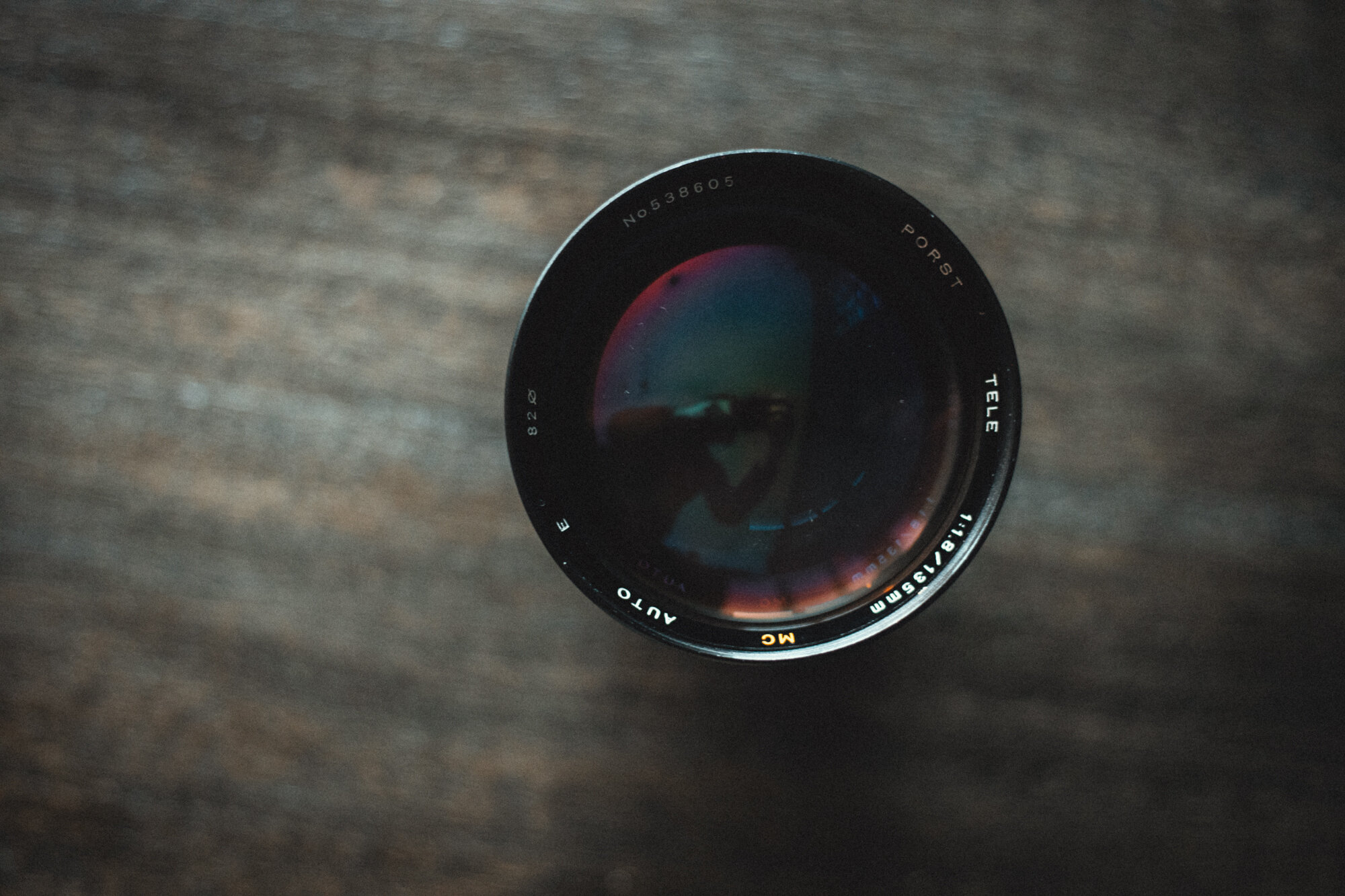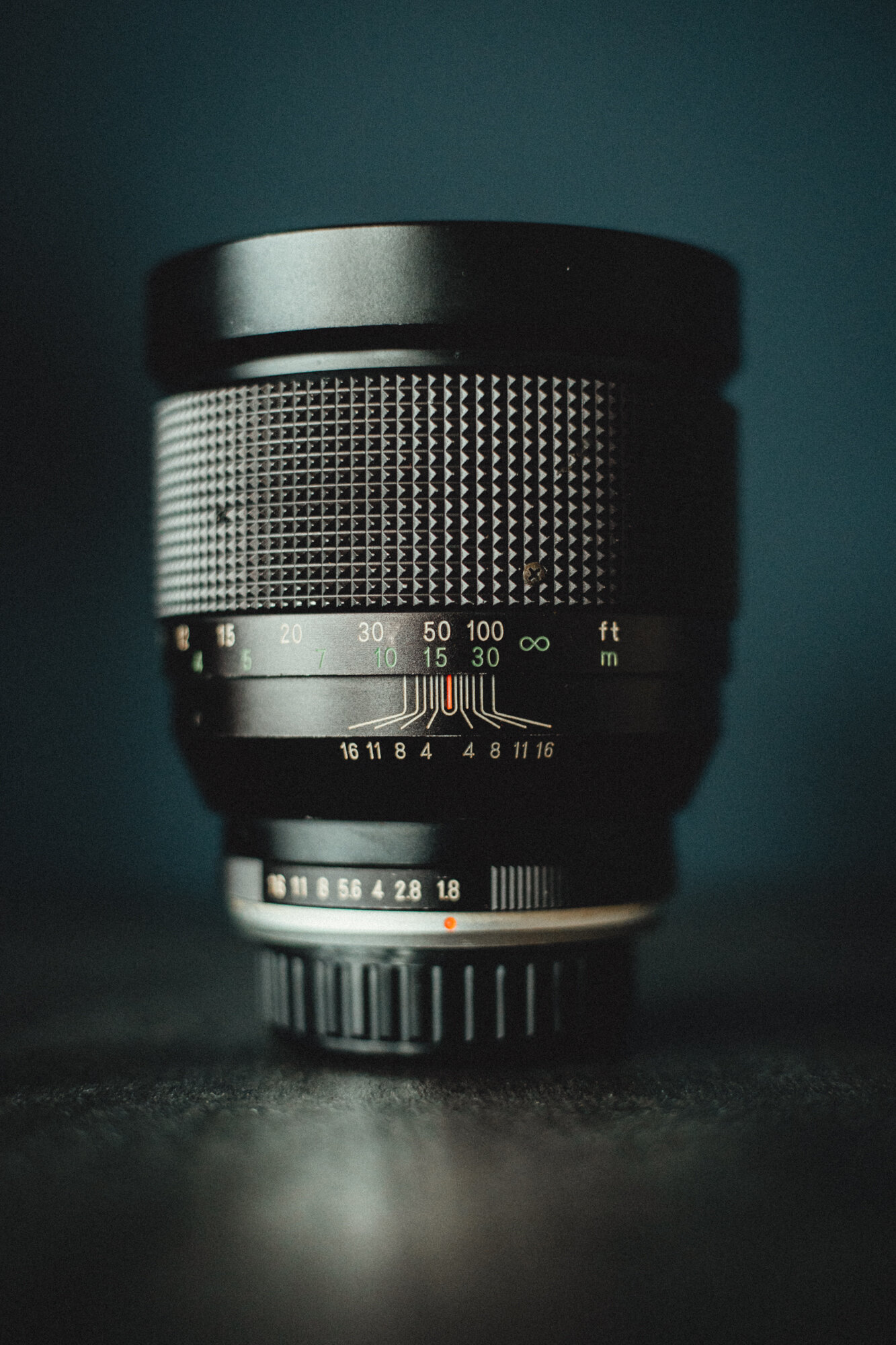Porst Tele Auto 135mm f1.8
Brand: Porst (Manufactured probably by Mitake)
Type: Prime Lens
Year of release: N/A
Focal Length: 135mm
Aperture: 1.8 to 16
Weight: 819g
Condition of my copy: Almost no marks of use and the glass is clean. Aperture and focus are working.
Build
The Porst 135 f1.8 Tele is a beast of a lens. Weighing over 800g and featuring a massive 82mm filter thread, this lens dwarves most cameras you attach it to. When focused to infinity, the lens will stick out from your cam by 9.2cm, making it a rather short lense compared to its weight and diameter. My copy is made for the Pentax K mount, but since I don’t own any camera with that mount I bought an adapter to attach it to my Canon EOS R. With the adapter, the lens extends about 2.5cm further from the camery body.
All that heft has its upside, too, or rather its reason. The lens is superbly built and everything you touch is metal (except, obviously, the glass elements, but you shouldn’t touch those anyway). It doesn’t even feature a rubberized focus dial, which would’ve been helpful, since the focus dial is so tight that racking focus is a surprisingly hard task, requiring the entire hand. Quickly adjusting the focus to a change in distance to your model won’t happen.
Apropos focus range. The minimum focus distance is 1.7m, which is a bit of a bummer, since the lenses primary modus operandi would be portraits and due to that rather long MFD portraits with the face covering the entire image are not possible (unless your model has a very large face).
The aperture is clicked and features 8 blades, which allows for a pretty round bokeh, though more blades would be more appropriate for a lens of those specs.
Image Quality
Now this is a tough one. Old lenses obviously do have more faults (and dare I say character) than modern lenses. The Porst can present you with nearly all aberrations known to man and wide open it’s as sharp as a spoon. Still, due to its soft nature and large aperture, it produces a very dreamy look with an exceptional bokeh, which in itself isn’t as prominent as, let’s say, the Helios 44-2’s swirly bokeh, but in it’s creaminess it contributes noticeably to the picture.
In some situations it showed a sudden lack of contrast, as if the lens was filled with fog (which of course it wasn’t). I mainly noticed this effect in open sunlight. When in shade or artificial light, the lens provides a satisfactory amount of contrast considering its softness.
Vignetting is noticeable, but since I like a little vignette on my pictures, not annoying and easily corrected in Adobe Lightroom. I didn’t notice any prominent distortions, but I haven’t shot any objects which would have highlighted those, like a brick wall for example.
Conclusion
Overall, this is a fine lens. Sharpness and contrast are alright for a lens of this price tag, since it can be found on eBay for 350-500€. As a portrait lens, it’s great and renders pictures almost like paintings.
Little disclaimer: Since the maximum aperture of 1.8 and the focal length of 135mm create a razor thin depth of field, acquiring critical focus is difficult. Therefore, some of the afore mentioned softness might be due to my focus being slightly off sometimes.
I like this lens and I think its existence is justified, but I won’t use it much. For me, the weight and stiffness of the focus dial make it too cumbersome to use and I find its focal length and long MFD too limiting for my style and taste. Still, for painting like pictures this probably is the go to lens under 600€.
When buying this lense watch out for the mount. Make sure you’ll get something that is easily adaptable, like a M42 version.
Sample pictures shot on Canon EOS R and a PK-RF adapter.









